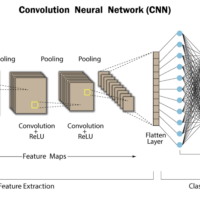Vanishing gradient explained in detail _ Day 20
First let’s explain what’s Vanishing Gradient Problem in Neural Networks Understanding and Addressing the Vanishing Gradient Problem in Deep Learning Understanding and Addressing the Vanishing Gradient Problem in Deep Learning Part 1: What is the Vanishing Gradient Problem and How to Solve It? In the world of deep learning, as models grow deeper and more complex, they bring with them a unique set of challenges. One such challenge is the vanishing gradient problem—a critical issue that can prevent a neural network from learning effectively. In this first part of our discussion, we’ll explore what the vanishing gradient problem is, how to recognize it in your models, and the best strategies to address it. What is the Vanishing Gradient Problem? The vanishing gradient problem occurs during the training of deep neural networks, particularly in models with many layers. When backpropagating errors through the network to update weights, the gradients of the loss function with respect to the weights can become exceedingly small. As a result, the updates to the weights become negligible, especially in the earlier layers of the network. This makes it difficult, if not impossible, for the network to learn the underlying patterns in the data. Why does this...

